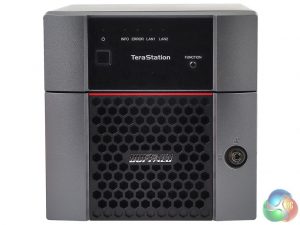
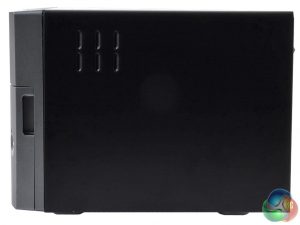
The TeraStation TS3210DN is a compact front loading tower design with a metal chassis and cover and a good quality plastic bezel. The front bezel is split horizontally, the bottom half is made up of the drive bay door with the power button, function button and indicator lights all in the top half.
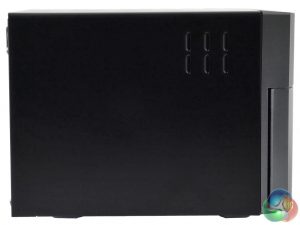
The power button sits on the left-hand side while a function button sits on the right. The function button is used to rebuild RAID arrays, dismount any USB devices, configuring failover and initializing settings using a USB drive.
Above these two buttons is a panel that holds all the indicator LEDs; power, info, error and one each for the two LAN ports. There are two more LEDs by the side of the drive bays to indicate drive activity.
There's another important button which is hidden away under the bottom edge of the top half of the bezel and can only be accessed if the bay door is open – the Init button. Holding this down resets the admin username and password, any network configurations, SSL and security port details back to factory default settings, quite handy if you forget the admin username and/or password.
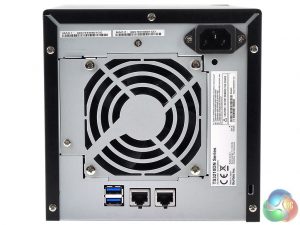
The back panel is dominated by the grill for the cooling fan. Above this is the power connector for the mains lead. Sitting below the grill are a pair of LAN ports (which support Link aggregation) next to which are a stacked pair of USB 3.0 ports.
What is sorely missing is a USB port on the front bezel as you have to keep reaching around the back of the unit to plug any external device in. It's a very strange design decision especially as there is enough room in the top half of the bezel for a least one port.
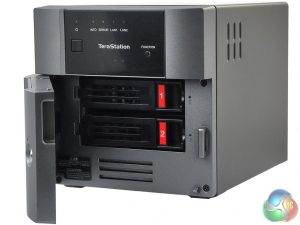
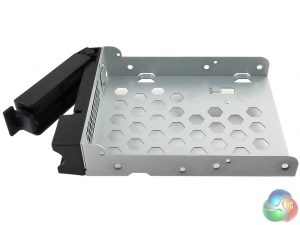
The drive bays are mounted horizontally protected by a lockable bay door, a useful bit of physical security. The drive trays are off a metal construction with the drive doors made of plastic with sliding locking latches, but unfortunately the trays are not tool free. They are, however, hot swappable.
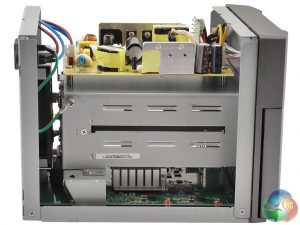
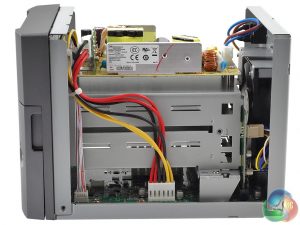
Once the cover is removed, the first thing you are confronted by is the board holding all the power components that sits on top of the drive cage assembly. It's not a particularly elegant solution, but in Buffalo's defence not that many people will be whipping the cover off on a regular basis. The motherboard sits under the drive cage in the bottom of the chassis.
Physical Specifications
Processor: AnnapurnaLabs Alpine AL-212 1.4GHz
Memory 1GB DDR3.
Gigabit Ethernet Ports x 2.
Rear panel connectors 2 x USB 3.0 Type A, 2 x LAN
RAID support JBOD, RAID 0, 1
Cooling 1 x 120mm fan
Maximum hard drive size supported 4TB.
Maximum Capacity 8TB.
Dimensions (D x W x H) 230 x 170 x 170mm.
Weight 4.8kg.
 KitGuru KitGuru.net – Tech News | Hardware News | Hardware Reviews | IOS | Mobile | Gaming | Graphics Cards
KitGuru KitGuru.net – Tech News | Hardware News | Hardware Reviews | IOS | Mobile | Gaming | Graphics Cards


